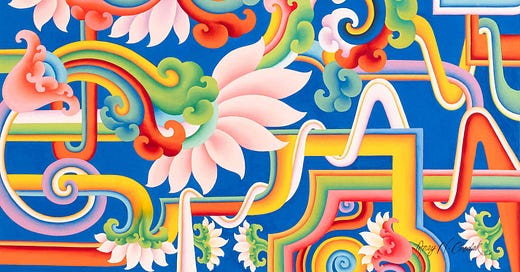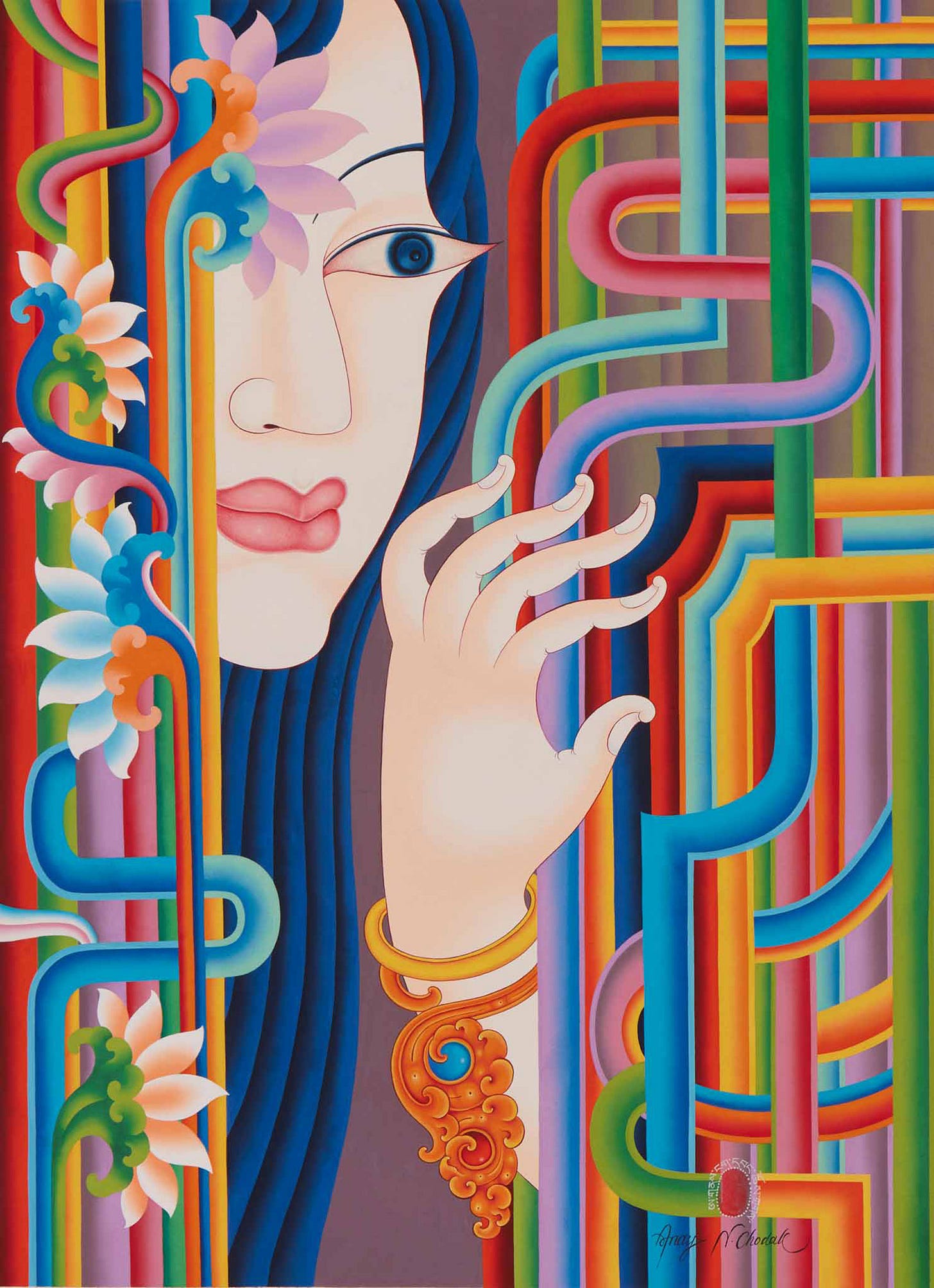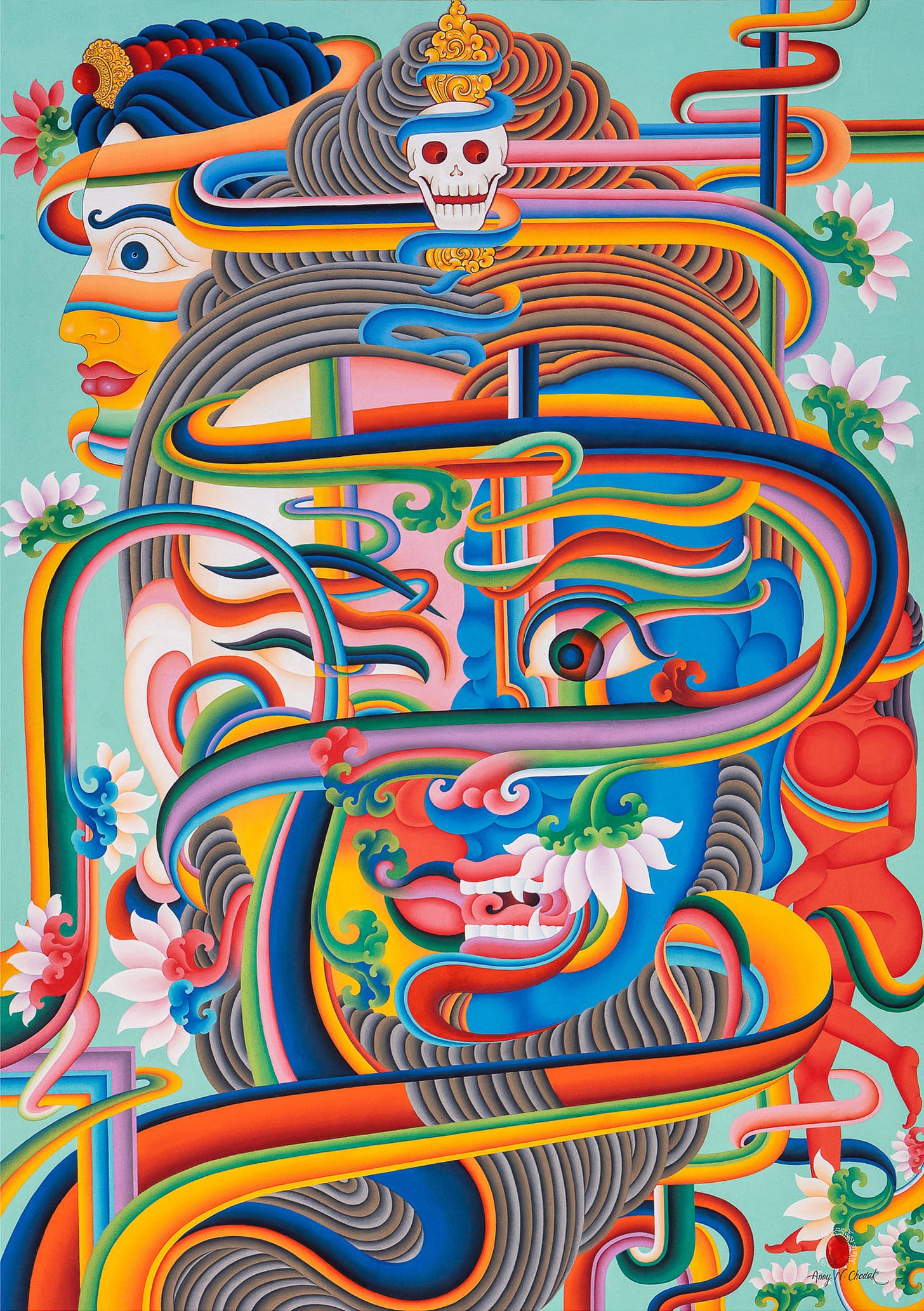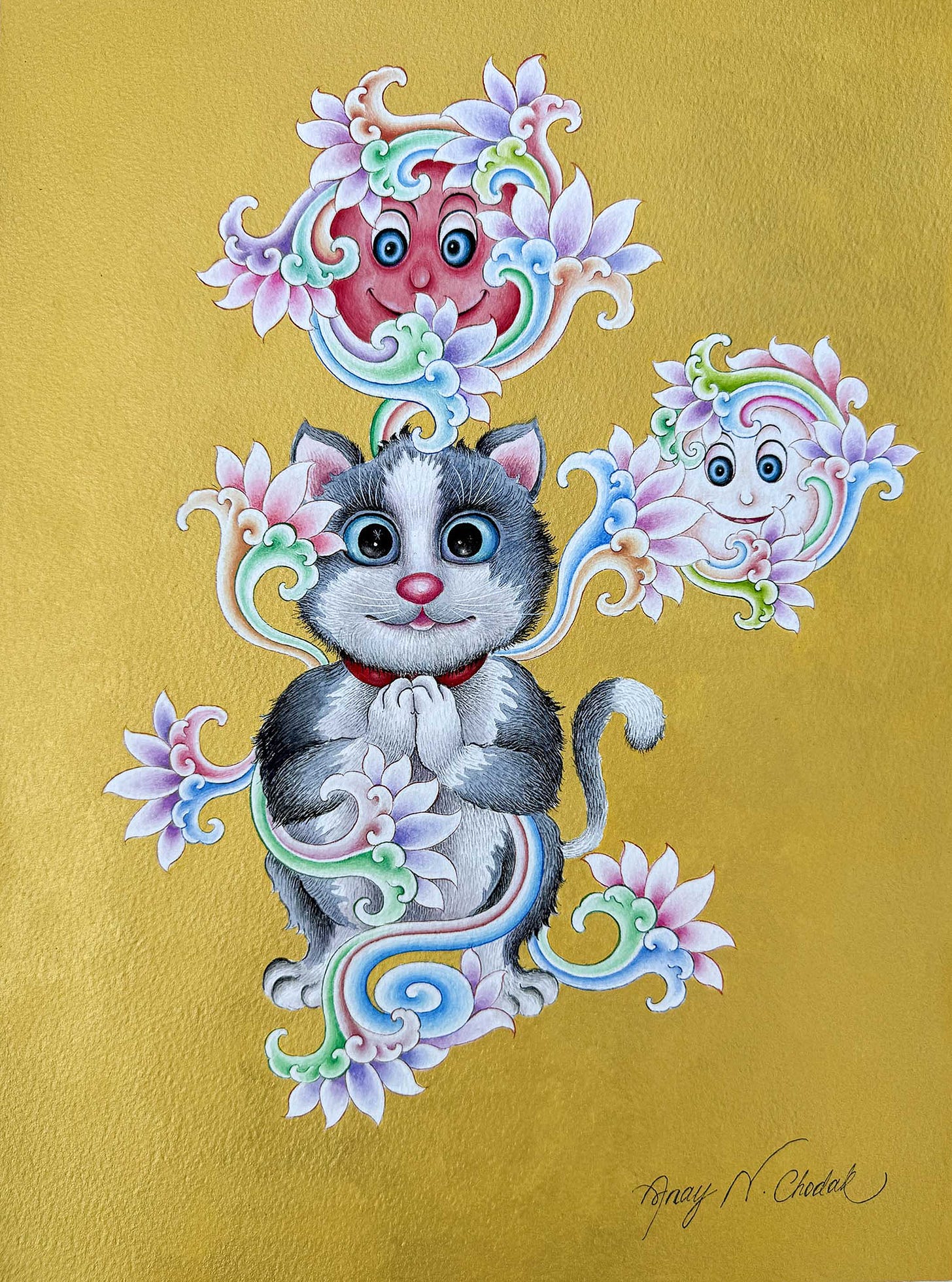In the Himalayan foothills, where Buddhist ritual and artistic tradition are deeply intertwined, Tibetan artist Anay Ngawang Chodak was raised surrounded by thangkas (Buddhist paintings on cloth), altars, and daily spiritual practice. Today, his work bridges those ancestral roots with a contemporary visual language that is layered with symbolic forms that remind us of our shared interdependence.
After more than two decades of training in traditional thangka art, Ngawang’s art has evolved into a contemplative offering that honors the precision and patience of his lineage, while inviting new forms of clarity, compassion, and connection.
I spoke with Ngawang about his process, materials, and what it means to carry sacred art into the present.
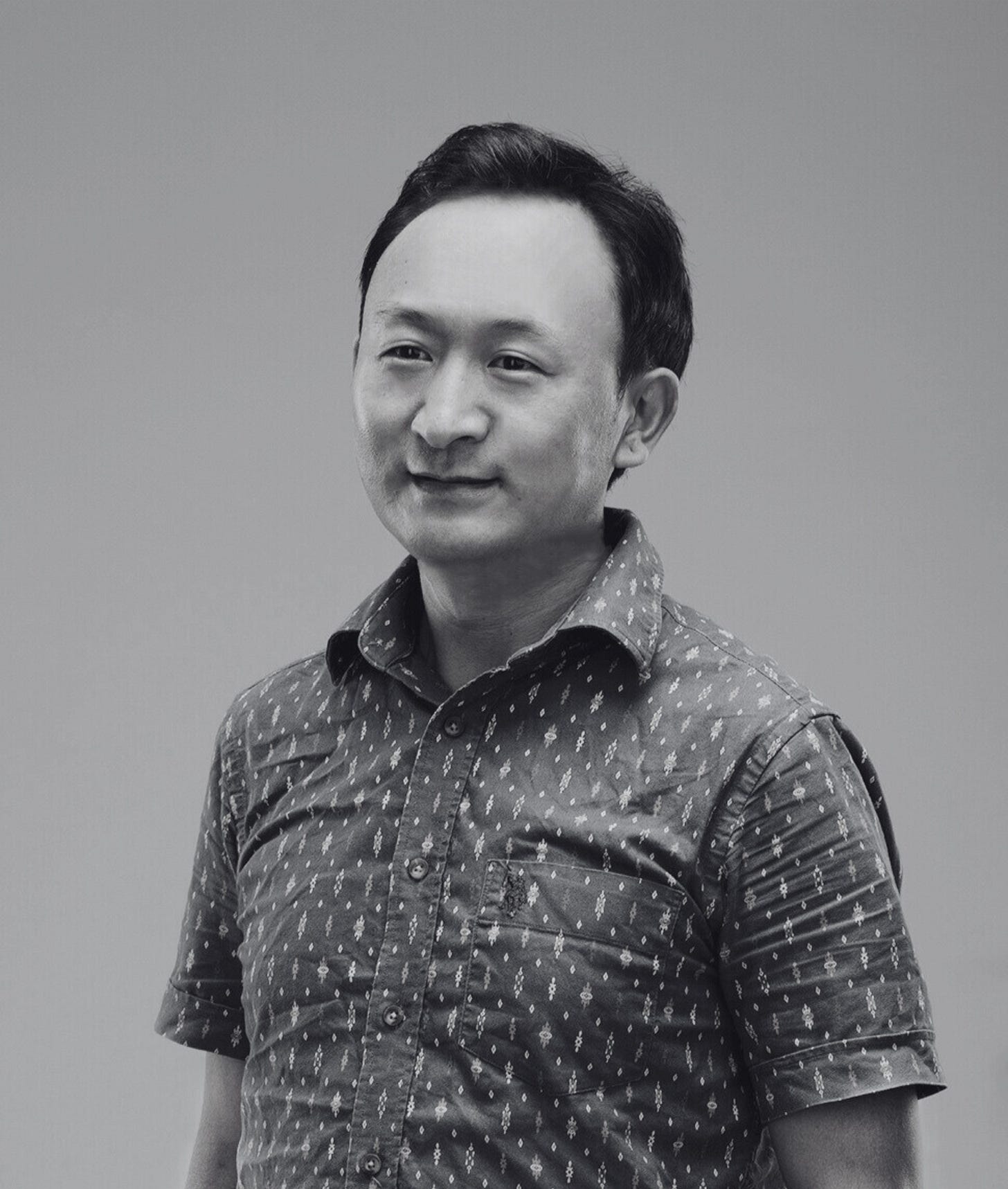
You painted traditional thangkas for over two decades. What inspired you to shift into a more contemporary visual language?
I have always loved modern art ever since I first studied it in art high school. While I was deeply immersed in traditional thangka training, the language of contemporary art always resonated with me. It gave me the freedom to explore more profound questions of existence and express Buddhist philosophy in ways that felt personal, alive, and relevant to our times.
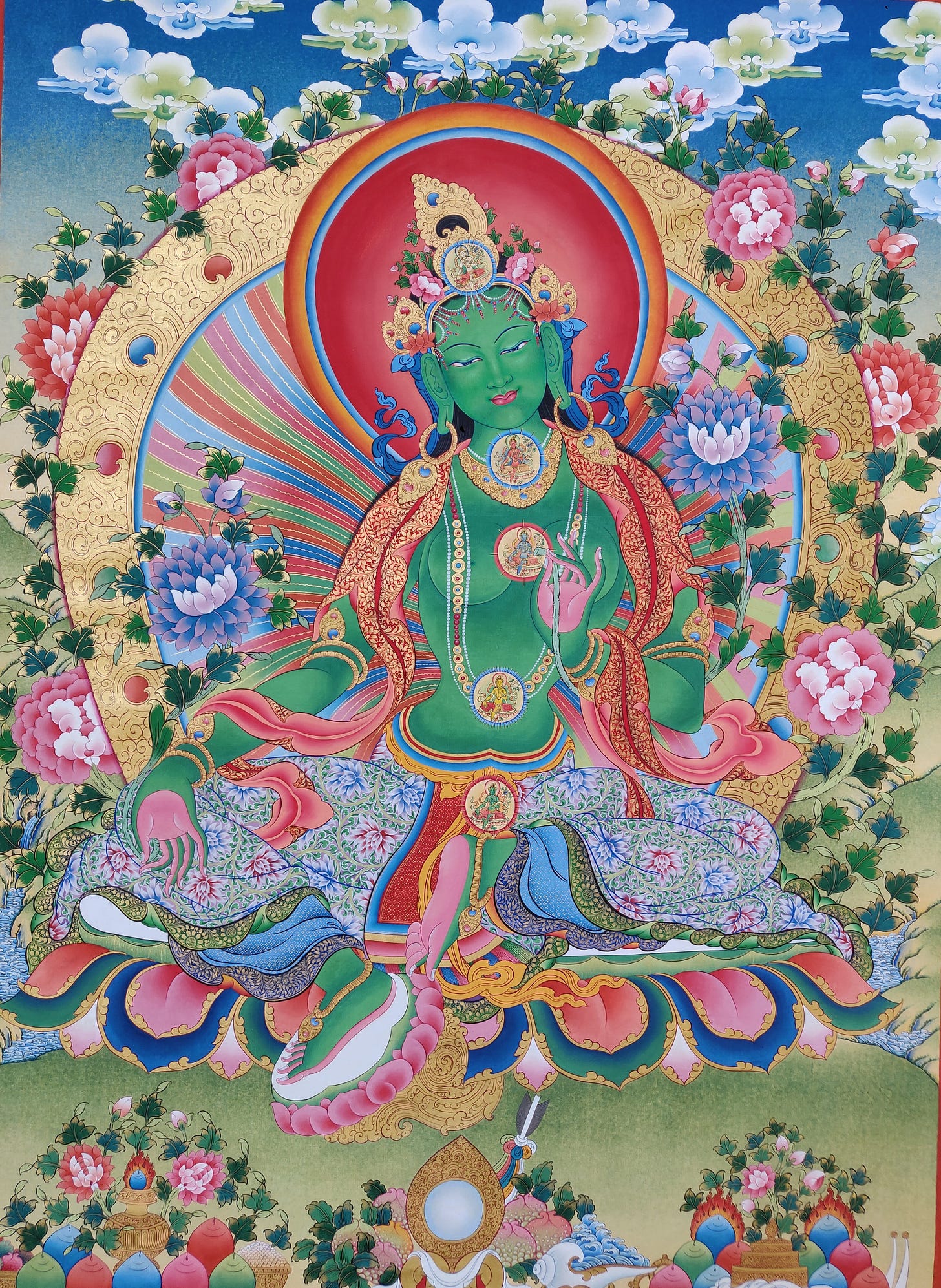
Over two decades of painting traditional thangkas—often for long hours—have taught me deep patience, attention, and devotion. I have learned the true meaning of life from renowned Buddhist masters. These disciplined habits remain with me, but they now manifest in works that reflect my artistic expression while still being grounded in my contemplation and philosophical understanding.
[That said], I’ve come to realize that even young people from the Himalayan region sometimes struggle to connect with the traditional forms and symbolism of Buddhist thangka art. This recognition inspired me to express my spiritual and philosophical understanding in a more modern visual language. Through contemporary forms, I hope to make these timeless values more accessible and resonant for today’s audiences, bridging ancient wisdom with present-day sensibilities.
Was there any tension or hesitation in that transition?
No, it all came very naturally. Art is my passion, and so is Buddhism. These two have been the guiding forces of my life, and I have always admired and appreciated both. Moving into a contemporary visual language was not a break from tradition, but a continuation—a way to allow the timeless essence of Buddhist art to breathe within a modern context.
Moving into a contemporary visual language was not a break from tradition, but a continuation.
For those unfamiliar, how would you describe thangka and its significance?
Thangka is a sacred art form rooted in Buddhist scriptures and spiritual practices. It’s not merely decorative, it serves as a visual teaching tool created for personal meditation and spiritual development.
Every detail, from the deities’ postures, the objects and mudras of their hands, to the colors and backgrounds, is guided by ancient texts. They provide precise visions to deepen one’s spiritual journey.
What traditional techniques still carry into your work today?
I combine methods like Lundang (wet-on-wet shading) and Kamdang (dry shading) to create luminous transitions, tonal depth, and surface precision - often so refined that it appears digital, though entirely painted by hand.
I also prepare my painting surfaces using handmade cotton canvas, following an 800-year-old tradition of thangka making. This involves multiple layers of Japanese animal glue gesso and natural sand pigment, all polished repeatedly with stone to create a durable, cohesive surface. This ritual connects me to my roots, imbuing each finished piece with artisanal skills rooted in patience and discipline.
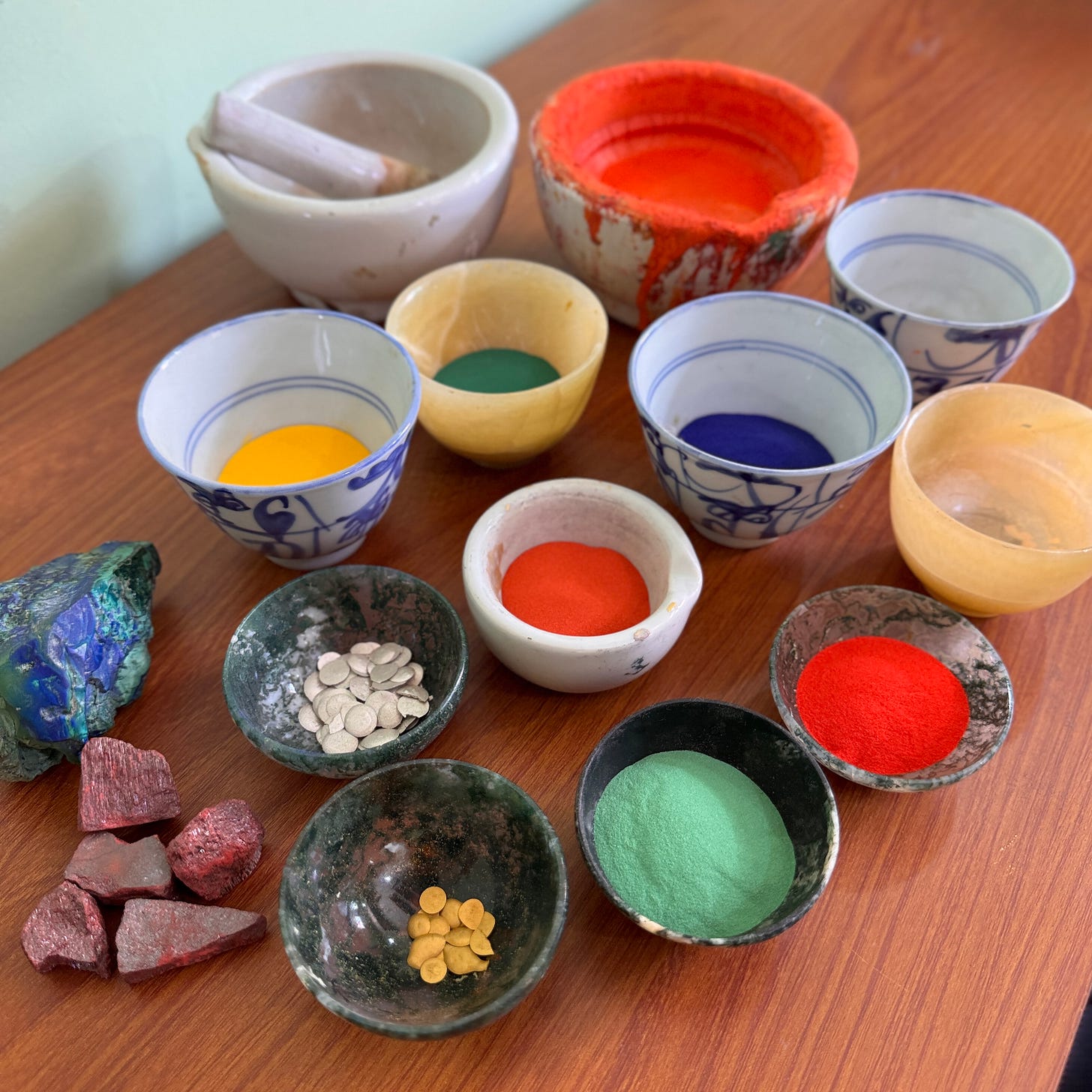
Are there spiritual elements from thangka-making that still carry into your current work?
Absolutely. My art is an ongoing reflection on the mind—on the interconnectedness of all beings, on compassion, and on the causes of happiness and suffering. I see little separation between spiritual contemplation and artistic creation. The process of making each piece is deeply meditative and grounded in the Buddhist understanding of our shared existence.
Your work draws on Kashmiri-style Alchi, Newa Paubha, and Tibetan aesthetics. How do these influences show up?

If you trace the history of these styles, you will find that Kashmiri-style Alchi, Newa paubha, and Tibetan arts all originate from India's Nalanda tradition, which is rooted in the rise of Buddhism and its significant and extensive artistic and cultural influence in Asia and the world.
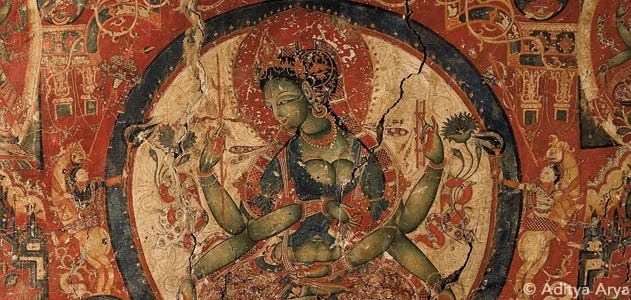
I’m drawn to the elongated eyes found in the Kashmiri-style Alchi murals as they possess a powerful beauty that deeply resonates with me. This influence can often be seen in my own figures.
The intricate line work, elegant forms of hands, and fluid movement of bodies in my art also reflect the aesthetics of these various traditions of Newa Poubha, Kashmiri-style Alchi, and Tibetan art.
Can you share more about your recent collection?
Arise and Grow is my most recent collection and embodies the Buddhist ideal of equanimity—a balanced, peaceful state of mind that embraces all beings with equal compassion.
In the piece Arise and Grow in Equanimity, flowers represent the freshness and vitality of inner transformation through wisdom and compassion. The Interconnected Links are not merely visual—they reflect the vast, invisible bonds between us.
I worked with mineral pigments imported from Japan, French gouache, and 24K gold on hot-pressed French paper—materials that have their roots in nature and carry a tactile sense of reverence. These media remind me of the raw, authentic materials used in painting traditional thangkas.
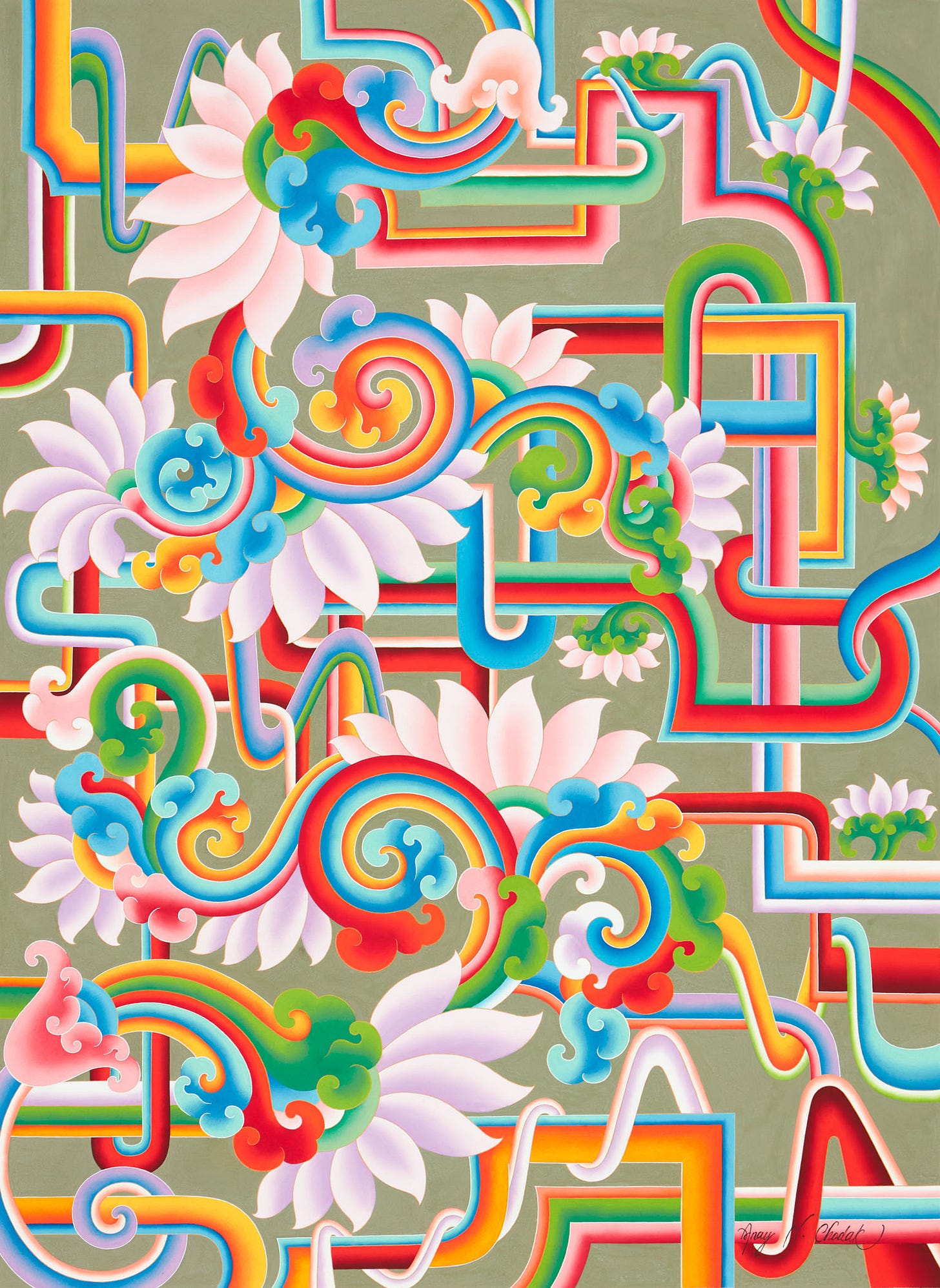
Let’s go back to your early life—what was it like growing up?
I was a quiet, curious, and free-spirited child. I loved to stay in my own world—drawing, imagining, and letting creativity flow freely in my mind.
I grew up in a devout Buddhist family with a lineage tracing back to the renowned master Repa Dorje Chang, a respected lineage in the local Buddhist community. My home and the monasteries in the community were filled with Buddhist thangkas, statues, carved wooden altars, and furniture, as well as daily spiritual rituals. The fusion of spirituality and art was simply a part of life—it shaped my mind and heart from the beginning.
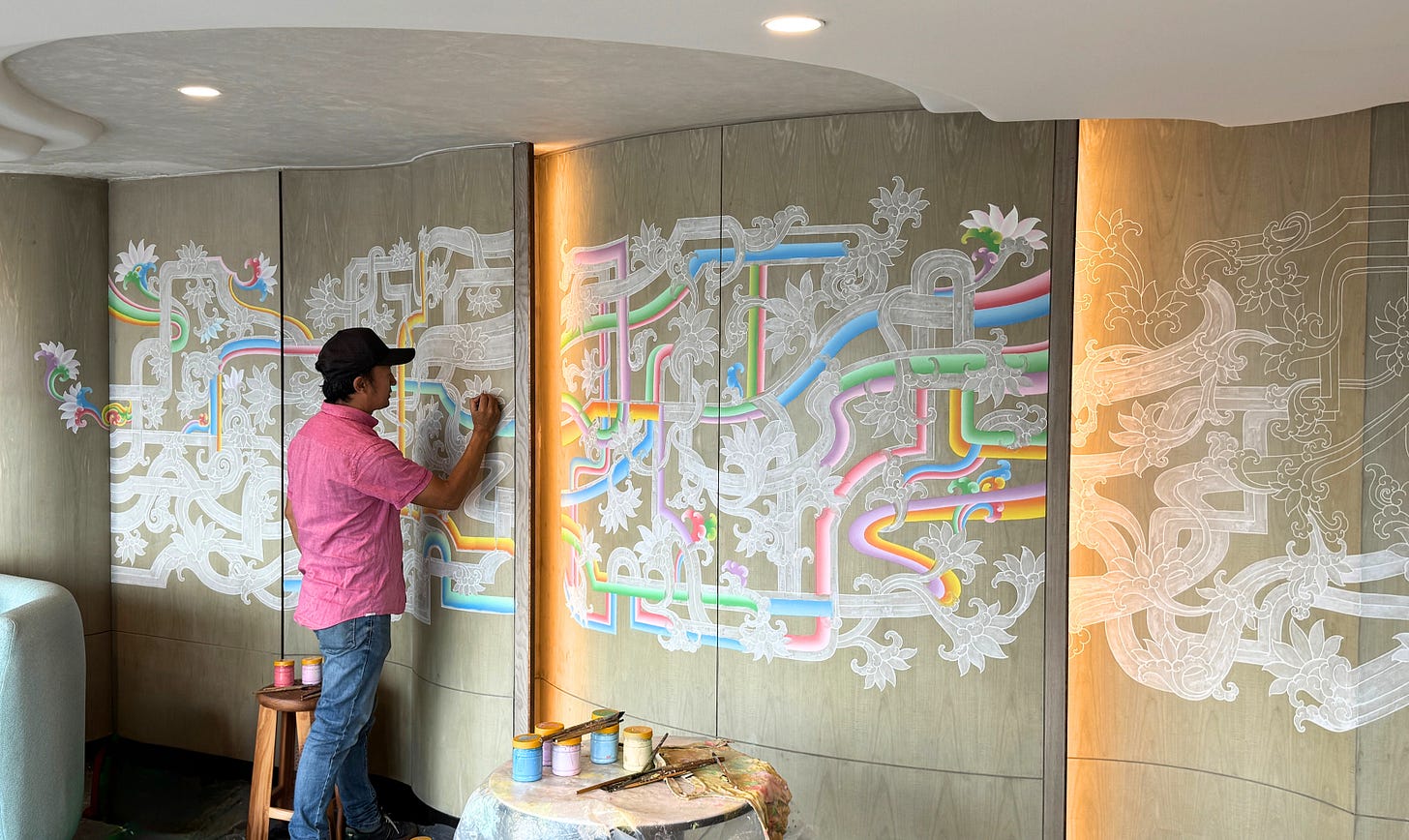

When did you know art was your path?
Art has always been my unwavering passion. Even as a child, I preferred sketching in my notebooks over studying.
When I chose to attend The Modern Art School in Mussoorie for high school in 1995, that’s when it truly became my path. Later, my apprenticeships with Paubha master Roshan Shakya in Kathmandu and Tibetan thangka master Ven. Jamyang in Dharamsala deepened my foundation and equipped me with the tools to embark on this lifelong journey fueled by my enduring passion.
What do you hope people feel when they experience your work?
I hope my art can evoke a sense of oneness and unity—encouraging more meaningful, empathetic, and connected relationships. In a modern world where separateness and loneliness often dominate, I want to remind people of our deep interdependence and shared human experience. Through visual storytelling rooted in Buddhist wisdom, I aspire to spark conversations around compassion, the beauty of difference, and how tradition can evolve to resonate with contemporary life without losing its essence.
In a modern world where separateness and loneliness often dominate, I want to remind people of our deep interdependence and shared human experience.
Upcoming Exhibitions
Ngawang just closed a solo show at Kate Oh’s Gallery in New York with an upcoming solo exhibition will open at Tibet House in New Delhi, followed by a group show with the Hyderabad Art Council this winter.
Beyond the Canvas
In addition to his visual practice, Ngawang is preparing to release a line of wearable artworks and spiritual jewelry, extending his symbolic language into tactile, everyday forms. He also plans to begin recording his chanting practice, a daily ritual from his youth, offering voice as another form of contemplative expression.
Follow along on Instagram and check out his website to purchase work.
All photos courtesy of artist.

